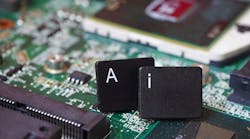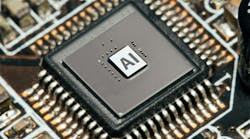Tiny AI on the Edge & AI EDAs: Transforming the Future of Design
Artificial intelligence (AI) has impacted everything and everyone in technology—akin to the diode, the transistor, and the smartphone. Adoption and application are happening faster than most are aware. Brace for it: AI is being used and adopted increasingly across the industry, with feedback amplifiers just one example. This train is unstoppable. It’s not alive; it’s simply a tool that we all should use.
As technology evolves, the design process faces greater complexity and demands for efficiency. The advent of tiny AI on the edge and AI EDAs promises to address these challenges, making the design process smarter and more streamlined.
Tiny AI on the edge brings powerful computing capabilities directly to devices, reducing latency and improving real-time decision-making. This shift allows for enhanced performance and functionality once thought unachievable in such small platforms.
AI EDAs use artificial intelligence to optimize electronic design workflows—exponentially more complex designs in a fraction of the time. These tools can predict design flaws, suggest improvements, and automate repetitive tasks, significantly reducing the time and effort required in the design cycle.
The combination of these technologies enables a more iterative and agile design process. Engineers can now perform real-time testing and validation at every step, ensuring higher quality and reliability in final products. The integration of AI allows for the handling of vast amounts of data generated during testing, providing deeper insights into systems.
To stay ahead in this rapidly evolving landscape, it’s crucial for design professionals to understand and embrace these technological advances. Starting September 2, join us at Electronic Design for a dedicated week of articles, product spotlights, and insights on the impact of tiny AI on the edge, AI EDAs, and how AI is impacting our world.
Learn how these innovations are shaping the future of electronic design and how you can use them for monumental shifts in your engineering ability.
Insights from Industry Experts
About the Author
Cabe Atwell
Technology Editor, Electronic Design
Cabe is a Technology Editor for Electronic Design.
Engineer, Machinist, Maker, Writer. A graduate Electrical Engineer actively plying his expertise in the industry and at his company, Gunhead. When not designing/building, he creates a steady torrent of projects and content in the media world. Many of his projects and articles are online at element14 & SolidSmack, industry-focused work at EETimes & EDN, and offbeat articles at Make Magazine. Currently, you can find him hosting webinars and contributing to Electronic Design and Machine Design.
Cabe is an electrical engineer, design consultant and author with 25 years’ experience. His most recent book is “Essential 555 IC: Design, Configure, and Create Clever Circuits”
Cabe writes the Engineering on Friday blog on Electronic Design.









